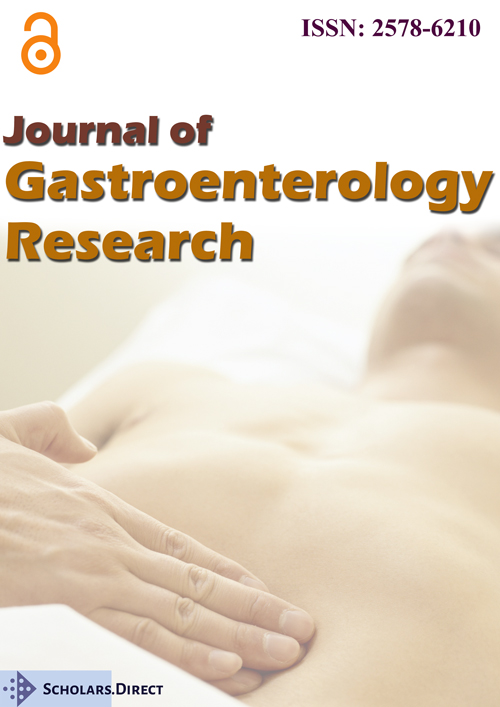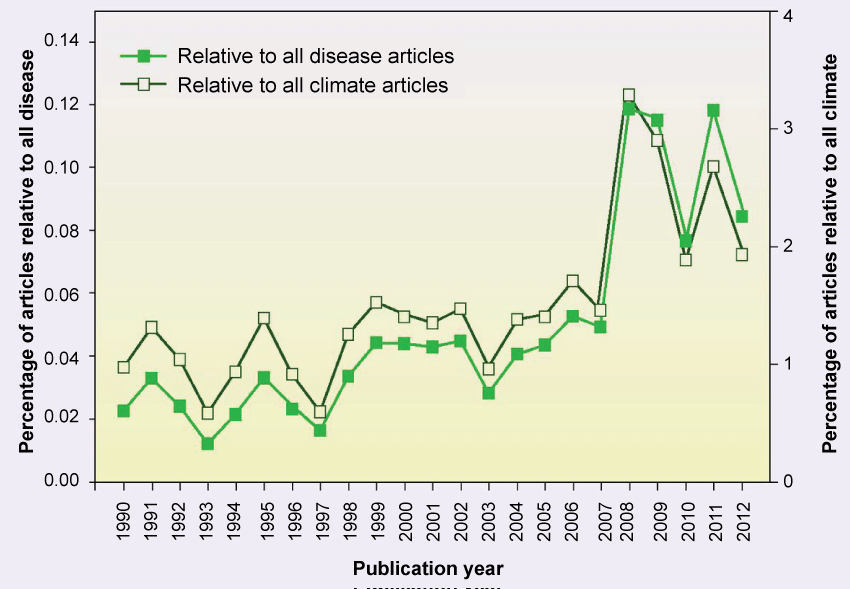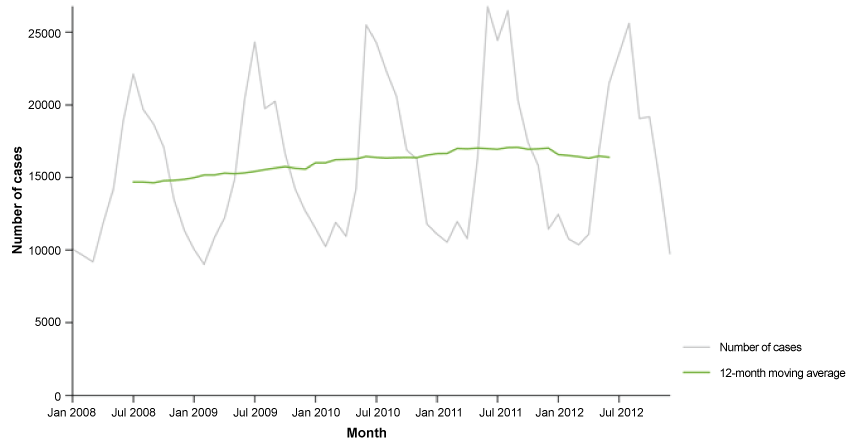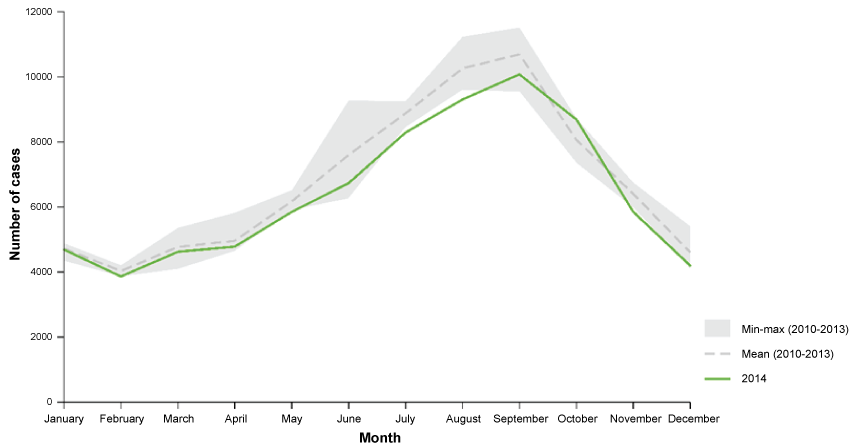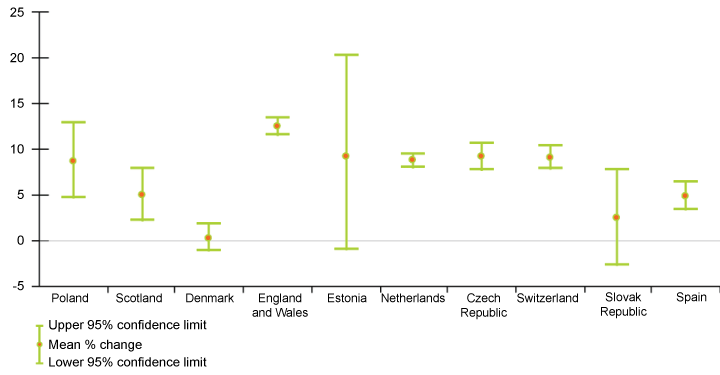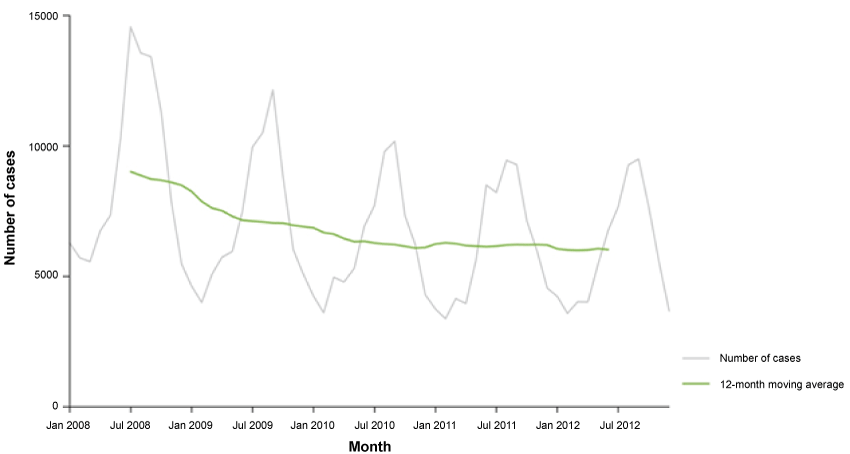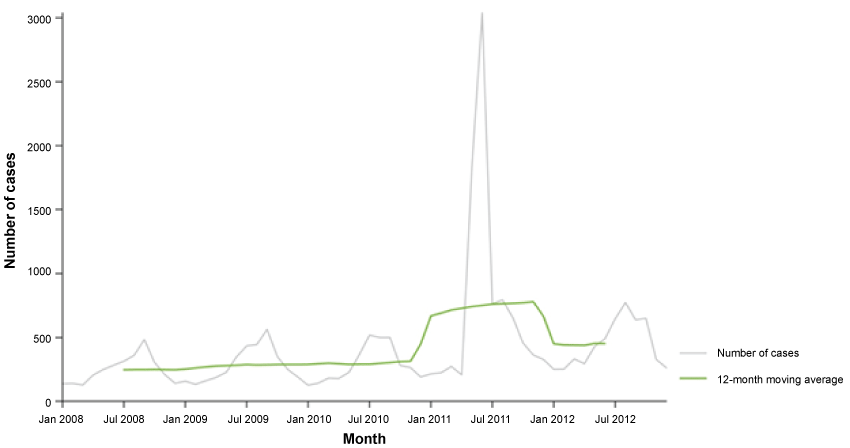Food Safety and Climate Change: Seasonality and Emerging Food Borne Pathogens
Abstract
The future consequences of climate change and its impact on food safety is still not clear due to many variations and uncertanities. It is obvious that seasonal distribution and incidence of campylobacteriosis, salmonellosis and vero-toxigenic Escherichia coli borne diseases are increasing as the environmental temperature increases. This review summarizes the studies and data acquired about the relationship of climate change and emerging food borne diseases. Globalisation triggered a change in socio-economical life style which affects touristic activities, food consumption, agricultural tendecies and changing demands. Additionally, changes in global trade including fair trade cause a globalization of local kitchens. The term food safety covers any physical, chemical or biological hazards that arise during food production. When combining food safety with climate change has impacts on temperature which directly affects precipitation changes, extreme weather events, and increase in acidity of seas and changes in transportation of environmental pollution. The data acquired from international organizations show clues about impact of climate change on food borne pathogens' incidence. In many studies, it is shown that the rise of the temperature has an impact on the incidence of salmonellosis, campylobacteriosis and vero-toxigenic colibasilosis. The public health control system should adopt an alarm system for increasing temperature and an interdisciplinary web of knowledge from farm to fork should be applied for protection of public health.
Keywords
Campylobacter, Salmonella, Escherichia coli, Food safety, Foodborne pathogens
Introduction
Globalisation triggered a change in socio-economical life style which affects touristic activities, food consumption, agricultural tendecies and changing demands. Additionally, changes in global trade including fair trade cause a globalization of local kitchens. As the demand in food supplies increases, the industrialization of food production becomes inevitable. The industrialization by all means causes change in the environment with triggering changes in all natural parameters. Climate change and global warming is an emerging subject which is subject of concern by all areas of science. As it become clearer that global warming cannot be reversed, scientist hold studies to understand the future consequences of changing environmental parameters. Food production may be the most affected subject with regard the question of food safety and food security [1,2]. The term food safety covers any physical, chemical or biological hazards that arise during food production. When combining food safety with climate change has impacts on temperature which directly affects precipitation changes, extreme weather events, and increase in acidity of seas and changes in transportation of environmental pollution. These emerging conditions lead significant differences in survival and behavior of all organisms. Such changes also have an impact on microbial ecology and growth, plant and animal physiology and host susceptibility which may result in the emergence, redistribution and changes in the incidence and intensity of plant and animal diseases and pest infestations, all of which could impact foodborne diseases and zoonoses [3-6].
Climate change and its impact on food safety which has many variations and uncertanities to determine, lead confusing predictions [7]. However, many studies held about this subject made the picture get clearer. Figure 1 taken from Altizer, et al. [8] shows research focused on associations between infectious disease and climate change has increased steadily over the past 20 years. In figure 1, total research interest in climate change (open symbols) or infectious disease (closed symbols), the frequency of papers referencing a climate-disease link in the title has nearly doubled over last two decades.
Food borne diseases and sources of contamination
Dramatic changes in climatic patterns are taught to effect environment, agents and hosts. This may trigger a change in routes of contamination, changes in niches and survival patterns, changes in the stable characteristics of food and feed [3-6]. As the raw material processed the exposure and risk of pathogen contamination increases. To combat this situation additives and protectants are applied. If the raw material is heavily contaminated and no preventative measures taken, the final food product will be heavily contaminated and will be a concern for public health. The climate change may trigger mechanisms of contamination with floods, with changing precipitation patterns and changing adaptation abilities of pathogens [9-11]. At the same time, vectors and pathogens' survival rates and spread will rise which will cause an increase in the contamination rates [11,12].
Food borne diseases and environmental changes
Food borne diseases have seasonal distribution changes that may be caused by changes in precipitation and temperature. Floods are also having an effect on food borne diseases. After floods, increases in diarrhoeal and respiratory diseases are observed, globally, transmission is increased where there is crowding of displaced populations [11,13]. These increases are probably related to damage to the home environment and economic losses and may persist for more than a year after flooding. It can be assumed that rise in environmental temperature and changes in precipitation parameters lead a rise in the food borne diseases [7,14]. Relationship between food borne diseases and environmental changes was reported by several authors [13,15-17]. Foodborne diseases classified as emerging diseases and monitored more routinely due to changing climate conditions which are easily screened and classified. These emerging pathogens include; Salmonella spp., Campylobacter jejuni, Listeria monocytogenes, Vibrio spp., and some viral diarrhoeal syndromes [18].
Bacterial contaminants and foodborne diseases
All monitored food borne pathogens are tought to be affected by seasons [18]. Screening of emerging food borne diseases is reported for Campylobacter spp., Salmonella spp. and Vero-toxigenic Escherichia coli.
Food borne Campylobacter infections: Campylobacter is a microaerophilic, thermotolerant pathogen which has a minimal infection dose around 500 cfu/mL [19]. Campylobacteriosis is the most common bacterial cause of diarrhoeal disease in the world, and the most common species associated with human infection are Campylobacter jejuni, C. coli, and C. lari [20]. The incubation period changes from two to five days. Common clinical symptoms include watery, sometimes bloody diarrhoea, abdominal pain, fever, headache and nausea. In some cases, infection may trigger reactive arthritis and Guillain-Barré syndrome. Outbreaks are associated with the ingestion of contaminated food or water. Person-to-person transmission is reported but rare [2,3].
Kovats, et al. [21] held a study to determine the seasonal pattern of Campylobacter infections in 18 different countries in 3 different continents. The results showed that in Europe there is a significant seasonality with a peak in recorded between April and May. On the contrary, in North American continent, Canada, the peak recorded between June and July. However, no peak recorded in Australian continent.
It is obvious that Campylobacter is a termophilic microorganism and rises in campylobacteriosis is normal in warm seasons. The seasonal distribution can be seen in figure 2 and figure 3. Cullen [22], reported that the incidence of Campylobacter borne infections will rise at a rate of 3% in coming decades. These increases are supported by thermophilic character of the bacteria and changing consumer preferences.
Food borne salmonellosis: Salmonella is an emerging pathogen that is isolated at high levels and not only effects flock health but also has a significant effect on public health. Salmonellosis is the second most commonly reported gastrointestinal infection and an important cause of foodborne outbreaks in the EU/EEA. Range of wild and domesticated animals are reservoirs for Salmonella species, and humans are usually infected through ingesting contaminated, undercooked food. Additionally, other exposures that have been linked to infections are travel, pet products and direct contact with live animals, also including exotic pets [1,3]. Outbreaks occur frequently and they can have a multinational scope due to cross-border travelling as well as food and animal trade. In a survey held in European Union, a 1 °C rise in global temperature was observed to trigger a rise in weekly Salmonella incidence which is shown in figure 4 [23].
In different studies held in different regions reported that there is a significal relationship between increasing environmental temperature and salmonellosis [15,24-27]. In European Union, number of salmonellosis cases increases during the hot months of the year (Figure 5). The effect of temperature on Salmonella is quite consistent across a range of different regions [11]. Salmonella Enteritidis appears to be more sensitive to the effects of environmental temperature, as compared with Salmonella Typhimurium [23]. Most published reports indicate that the heat tolerance of Salmonella increases as theaw decreases [28,29].
Food borne vero-toxigenic Escherichia coli: Food borne verocytotoxin-producing Escherichia coli (STEC/VTEC) is identical by an acute onset of diarrhoea, which may be bloody, and is often show itself with mild fever and vomiting. The infection may lead to haemolytic uremic syndrome (HUS), affecting renal function. Infection is mainly acquired by consuming contaminated food, like undercooked contaminated beef or contaminated vegetables, or water, but person-to-person and direct transmissions from animals to humans may also lead disease. The main reservoirs for STEC/VTEC bacteria are cattle, goats and sheep [3,30,31]. The seasonal peak in VTEC infections in late summer can be seen in figure 6. In EU there is a clear seasonality with an increase of infections in summer months between June and October between 2008-2011.
Results and Conclusion
It is clear that incidence of emerging food borne pathogens show an increase with the increasing temperature. Climate change may trigger a change in survival, vector usage and niches [11]. With respect to farm to fork food hygiene aspect not only the crops but also the animals may become suspected to the rising temperatures and this may lead spread of the pathogens of concern. Recommendations on food safety management emphasize the need for broad input and coordination between all sectors involved in the "farm to fork" food chain, even though this remains a challenge in many countries. Recognizing, understanding and preparing for the impacts of climate change further highlight the need to promote interdisciplinary approaches to addressing challenges affecting food safety given the inter-relationships among environmental impacts, animal and plant health impacts and food hygiene. Changing climate patterns have increased the priority and urgency to invest in disaster risk reduction, preparedness and response plans. As the plans built, key points should address food safety risks in the aftermath of natural disasters in the whole food chain. As building these plans, assessments of national infrastructure and operational capacity, and the ability to merge these capabilities on an international scale, in an effort to build emergency preparedness and response capacity should be taken into account. Climate change phenomena based changes should be handled according to guidelines of coordination and management, legislative framework, surveillance, monitoring, laboratorial and inspection services, and education, information and communication [32]. These guidelines underline the implementation of food safety management that is in line with FAO/WHO guidance. As the environmental changes become clearer a deep comprehension for capacity building, management, food services and pathogen physiology should be built. Additionally, inter diciplinary data transfer should be held in international level to combat future effects should be done.
References
- Koluman A, Celik G, Unlu T (2012) Salmonella identification from foods in eight hours: A prototype study with Salmonella Typhimurium. Iran J Microbiol 4: 15-24.
- Koluman A (2010) Detection of Campylobacter jejuni contamination in poultry houses and slaughterhouses. Turk Hij Den Biyol Derg 67: 57-64.
- ECDC (2014) European Centre for Disease Prevention and Control. Annual epidemiological report 2014 - Food- and waterborne diseases and zoonoses.
- FAO (2008) Expert meeting on Climate-Related Transboundary Pests and Diseases Including Relevant Aquatic Species, FAO Headquarters, Rome, 25-27 February 2008, Options for decision makers.
- FAO (2008) Expert meeting on bioenergy policy, markets and trade and food security and global perspectives on fuel and food security FAO Headquarters, Rome, 18-20 February 2008, Options for decision makers.
- FAO (2008) Food safety and climate change. FAO conference on food security and the challenges of climate change and bioenergy.
- Haines A, Kovats RS, Campbell-Lendrum D, et al. (2006) Climate change and human health: Impacts, vulnerability and public health. Public Health 120: 585-596.
- Altizer S, Ostfeld RS, Johnson PT, et al. (2013) Climate Change and Infectious Diseases: From Evidence to a Predictive Framework. Science 341: 514-519.
- McMichael AJ, Haines A (1997) Global climate change: the potential effects on health. BMJ 315: 805-809.
- Semenza JC, Menne B (2009) Climate change and infectious diseases in Europe. Lancet Infect Dis 9: 365-375.
- Tirado MC, Clarke R, Jaykus LA, et al. (2010) Climate change and food safety: A review. Food Res Int 43: 1745-1765.
- Miraglia M, Marvin HJ, Kleter GA, et al. (2009). Climate change and food safety: An emerging issue with special focus on Europe. Food Chem Toxicol 47: 1009-1021.
- Cairncross S, Alvarinho M (2006) The Mozambique floods of 2000: Health impact and response. In: R Few, F Matthies, Flood hazards and health: responding to present and future risks. London, 111-127.
- Koluman A, Dikici A (2012) Antimicrobial resistance of emerging foodborne pathogens: status quo and global trends. Crit Rev Microbiol 39: 57-69.
- Confalonieri U, Menne B, Akhtar R, et al. (2007) Human health. In: ML Parry, OF Canziani, JP Palutikof, PJ van der Linden & CE Hanson, Climate change 2007: Impacts, adaptation and vulnerability. Contribution of working group II to the fourth assessment report of the intergovernmental panel on climate change (eds), UK: Cambridge University Press, Cambridge, 391-431.
- Huang YL, Sung FC, Wang YC, et al. (2009) Impacts of weather events on gastrointestinal medical visits in Taiwan. Epidemiology 20: S125.
- McMichael AJ, Woodruff RE, Hales S (2006) Climate change and human health: present and future riks. Lancet 367: 859-869.
- ECDC (2007) Environmental change and infectious disease workshop. Meeting report, Stockholm, 29-30.
- https://wwwnc.cdc.gov/travel/yellowbook/2016/infectious-diseases-related-to-travel/campylobacteriosis.
- http://www.who.int/mediacentre/factsheets/fs255/en/.
- Kovats RS, Edwards SJ, Charron D, et al. (2005) Climate variability and campylobacter infection: An international study. Int J Biometeorol 49: 207-214.
- Cullen E, Elizabeth (2009) The impact of climate change on the future incidence of specified foodborne diseases in Ireland. Epidemiology 20: S227-S228.
- Kovats S, Edwards S, Hajat S, et al. (2004) The effect of temperature on food poisoning: a time-series analysis of salmonellosis in ten European countries. Epid Infect 132: 443-453.
- Bi P, Zhang Y, Hiller J, et al. (2009) Climate variability and Salmonella infection in an Australian temperate climate city. Conference of the international society of environmental epidemiologists, Dublin, Ireland.
- D'Souza RM, Becker NG, Hall G, et al. (2004) Does ambient temperature affect foodborne disease? Epidemiol 15: 86-92.
- Fleury M, Charron DF, Holt JD, et al. (2006) A time series analysis of the relationship of ambient temperature and common bacterial enteric infections in two Canadian provinces. Int J Biometeorol 50: 385-391.
- Lake IR, Gillespie IA, Bentham G, et al. (2009) A re-evaluation of the impact of the temperature and climate change on foodborne illness. Epidemiol Infect 137: 1538-1547.
- Corry JE (1974) The effect of sugars and polyols on the heat resistance of Salmonellae. J Appl Bacteriol 37: 31-43.
- Goepfert JM, Iskander IK, Amundson CH (1970) Relation of the heat resistance of salmonellae to the water activity of the environment. Appl Microbiol 19: 429-433.
- Dikici A, Koluman A, Çalıcıoğlu M (2014) Effect of decontamination with lactic acid solutions at different temperatures on cucumbers contaminated with Escherichia coli O157:H7 and non-O157 STEC. Food Cont 50: 184-189.
- Koluman A, Akar N, Haznedaroğlu IC (2015) Antibacterial Activities of Ankaferd Hemostat (ABS) On 'Shiga Toxin Producing Escherichia coli and Other Pathogens Significant In Foodborne Diseases. Turk J Haematol.
- http://www.fao.org/docrep/006/y8705e/y8705e00.htm.
Corresponding Author
Ahmet Koluman, Provincial Food Control Laboratory, Ministry of Food Agriculture and Livestock, Turkish Republic, Adana, Turkey.
Copyright
© 2017 Koluman A, et al. This is an open-access article distributed under the terms of the Creative Commons Attribution License, which permits unrestricted use, distribution, and reproduction in any medium, provided the original author and source are credited.

